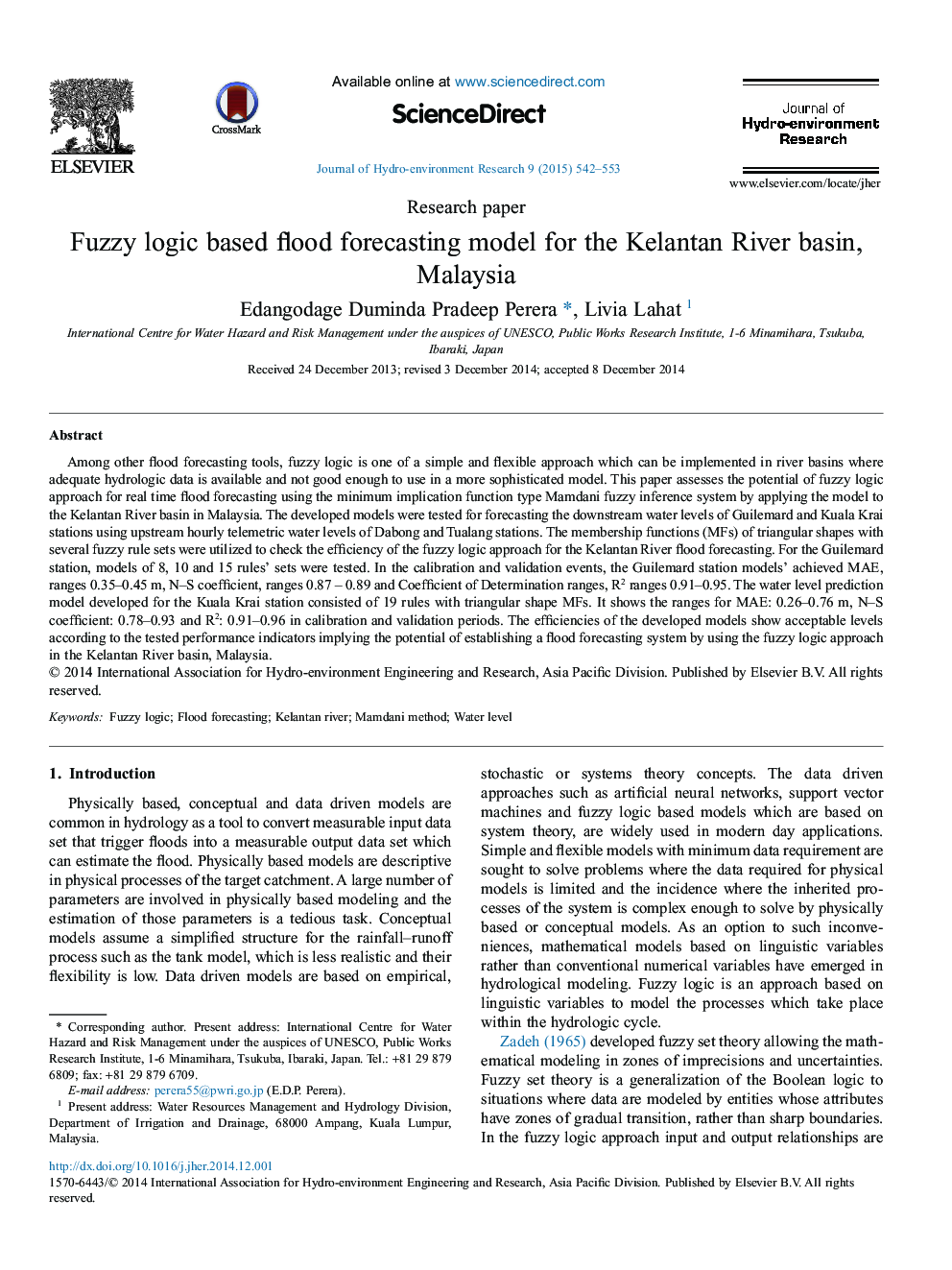| کد مقاله | کد نشریه | سال انتشار | مقاله انگلیسی | نسخه تمام متن |
|---|---|---|---|---|
| 4493627 | 1318657 | 2015 | 12 صفحه PDF | دانلود رایگان |
• Fuzzy logic was tested for discharge predictions at Kelanthan river basin.
• Mamdani FIS was applied to predict downstream discharges.
• Efficiency of fuzzy logic as a hydrological prediction model is discussed.
• Predicted water levels can be used as an early warning system in the basin.
Among other flood forecasting tools, fuzzy logic is one of a simple and flexible approach which can be implemented in river basins where adequate hydrologic data is available and not good enough to use in a more sophisticated model. This paper assesses the potential of fuzzy logic approach for real time flood forecasting using the minimum implication function type Mamdani fuzzy inference system by applying the model to the Kelantan River basin in Malaysia. The developed models were tested for forecasting the downstream water levels of Guilemard and Kuala Krai stations using upstream hourly telemetric water levels of Dabong and Tualang stations. The membership functions (MFs) of triangular shapes with several fuzzy rule sets were utilized to check the efficiency of the fuzzy logic approach for the Kelantan River flood forecasting. For the Guilemard station, models of 8, 10 and 15 rules' sets were tested. In the calibration and validation events, the Guilemard station models' achieved MAE, ranges 0.35–0.45 m, N–S coefficient, ranges 0.87 – 0.89 and Coefficient of Determination ranges, R2 ranges 0.91–0.95. The water level prediction model developed for the Kuala Krai station consisted of 19 rules with triangular shape MFs. It shows the ranges for MAE: 0.26–0.76 m, N–S coefficient: 0.78–0.93 and R2: 0.91–0.96 in calibration and validation periods. The efficiencies of the developed models show acceptable levels according to the tested performance indicators implying the potential of establishing a flood forecasting system by using the fuzzy logic approach in the Kelantan River basin, Malaysia.
Journal: Journal of Hydro-environment Research - Volume 9, Issue 4, December 2015, Pages 542–553
